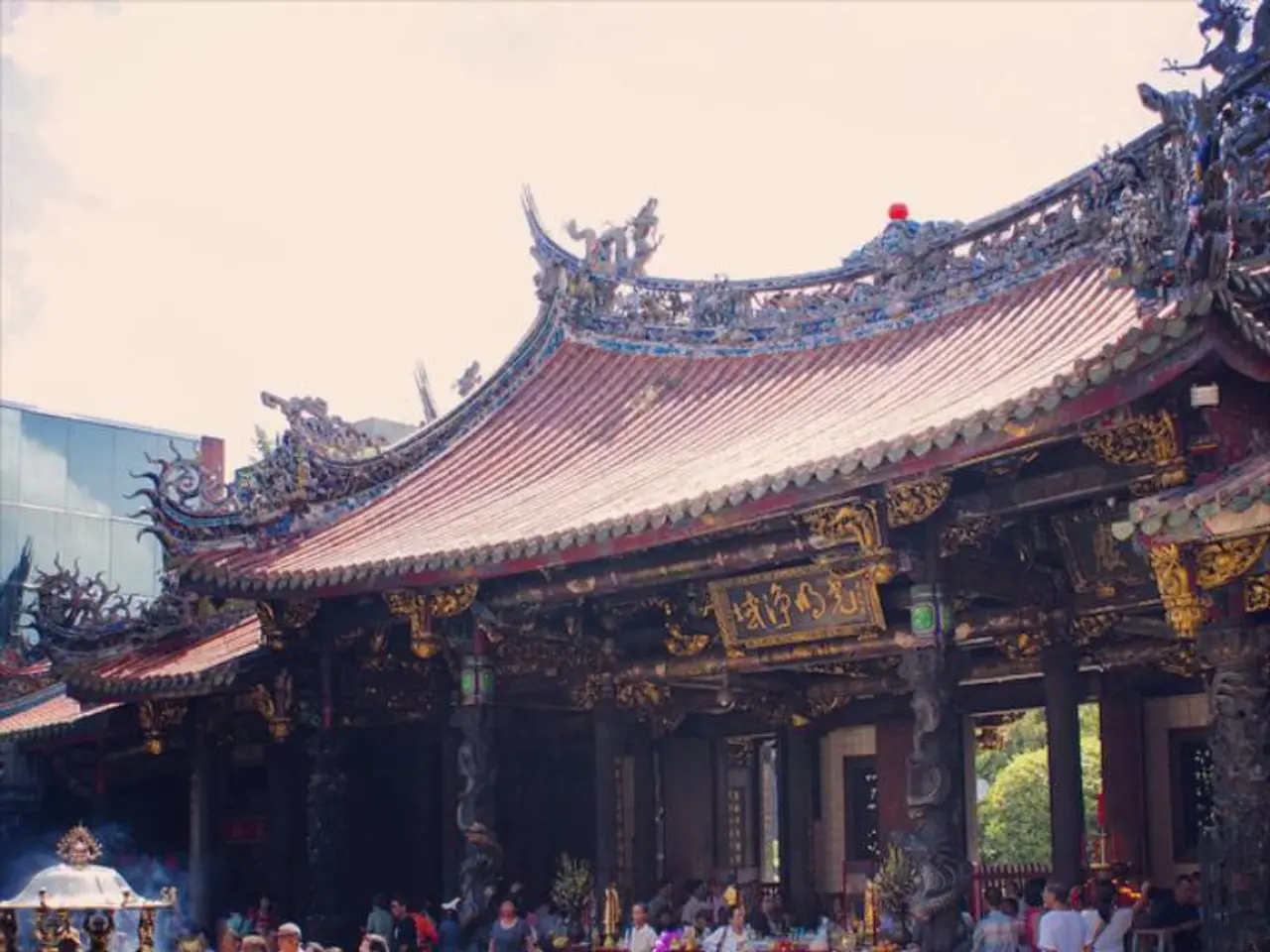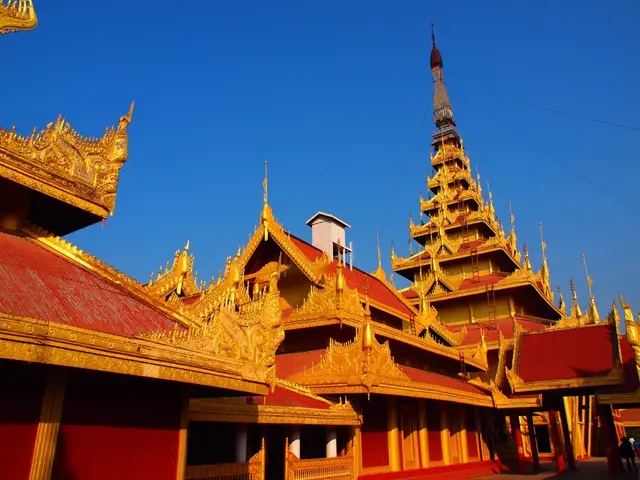Strategies for Maximizing a 48-Hour Stay in Tokyo
In the heart of Japan, Tokyo offers a unique blend of tradition and modernity that challenges common myths about the country. This two-day itinerary promises to give a great taste of Tokyo, showcasing the diversity and authenticity of the city.
Day 1
Upon arrival at Tokyo Narita International Airport, the KeiSei Express Shuttle provides a quick and affordable way to reach downtown Tokyo. Start your day with a warm cup of coffee, available at numerous cafes throughout the city.
Karaoke at Big Echo is recommended for an entertaining evening, offering a chance to let loose and immerse yourself in the vibrant Tokyo nightlife. For a more peaceful sanctuary, Meiji Jingu's Inner Gardens, nestled in the heart of the city, provides a tranquil escape.
Fukumori and Akihabara, located near each other, make convenient stops on the same day. Fukumori is a small collection of restaurants and artist co-op shop spaces, filled with fascinating goods made by local artists and foodies. Akihabara, on the other hand, is Tokyo's epicenter of anime, manga, and maid-cafe culture, with brightly colored neon signs and electronics shops.
For lunch, Tempura Tendon Tenya offers crispy tempura and slurp-a-licious udon, providing a delicious taste of traditional Japanese cuisine. After a busy day, Hitachino Brewing Lab, a cozy and hip microbrewery located in Fukumori, offers the perfect pint to unwind.
Day 2
Begin your second day with a visit to the Imperial Palace, home to Japan's Imperial Family. The well-manicured gardens and ancient Japanese buildings juxtaposed against modern buildings of Tokyo make for an intriguing sight.
Next, head to Kachidoki Bridge, suggested as a starting point for a casual stroll along the Sumida River, north of Tsukiji. The Tsukiji Fish Market, in operation since the 16th century, is one of the largest fish markets in the world, passing over 2000 tons of marine products each day. Sushi lovers will find Tsukiji Market a must-visit, as one bite of the ultra-fresh fish there is likely to make any other sushi back home pale in comparison.
The Tokyo Metropolitan Government Building's 45th floor observation deck offers expansive views of Tokyo's sprawl, providing a perfect opportunity to take in the city's skyline. For a taste of Japan's fried pork cutlets, Yabaton Tokyo Ginza is a well-known tonkatsu restaurant that should not be missed.
In the evening, Shibuya Crossing, an iconic site in Tokyo, becomes a spectacle as masses of people scuttle across. Starbucks Coffee at Shibuya, with its third-floor vantage point, offers a great spot to watch the crowds.
To round off the day, the Tokyo Ginza Bay Capsule Hotel, located in the upscale Ginza neighborhood, provides clean, comfortable, and convenient lodging at a relatively affordable price. For a cozy local's place in Ebisu, Ichika Bachika offers roast skewers of pork belly and udon noodle soup, providing a perfect end to your Tokyo adventure.
This itinerary aims to dispel common myths about Japan, such as the ideas that all Japanese food is healthy and that Japan is uniformly highly technologically advanced. While Japan does have an abundance of fresh fruits, vegetables, and nutritious traditional dishes, Tokyo’s plentiful konbini offer a wide range of pre-packaged, fried, and sugary foods. Visiting Tokyo also reveals that geisha are skilled entertainers and artists trained in traditional arts, not courtesans, and that Japan’s reputed technological advancement is nuanced, with some areas cutting-edge while others maintain traditional or everyday infrastructures.
[1] For more information on the diversity and modernity of Japanese eating habits and the misconceptions about geisha culture, please refer to the sources below:
[1] "Debunking Myths about Japan: The Truth Behind Stereotypes" by Culture Trip, published on 29th November 2017, https://theculturetrip.com/asia/japan/articles/debunking-myths-about-japan-the-truth-behind-stereotypes/
[2] "Geisha in Japan: The Real Story" by Japan Today, published on 14th November 2012, https://www.japantoday.com/category/lifestyle/geisha-in-japan-the-real-story
- After indulging in a traditional Japanese meal at Tempura Tendon Tenya, one can find a contrast in cuisine at Ichika Bachika in Ebisu, offering roast skewers of pork belly and udon noodle soup, opening another aspect of Tokyo's diverse food culture.
- To fully understand the unique blend of tradition and modernity in Tokyo, a visit to Shibuya Crossing and the Tokyo Metropolitan Government Building's observation deck reveals the co-existence of the ultra-modern cityscape with Japan's ancient buildings, such as the Imperial Palace, showcasing the complexity of Tokyo's lifestyle and cultural essence.




